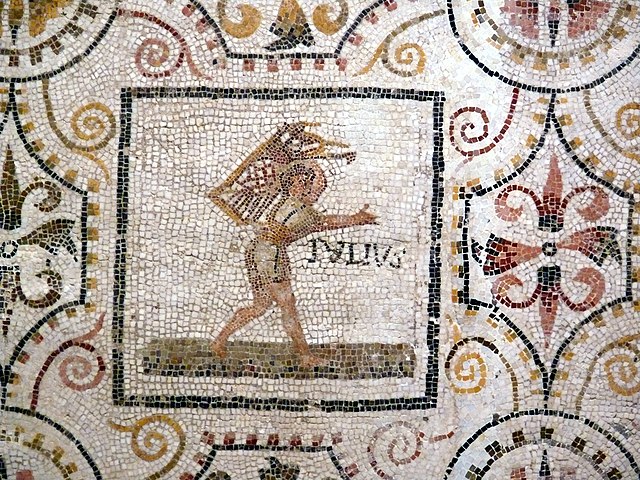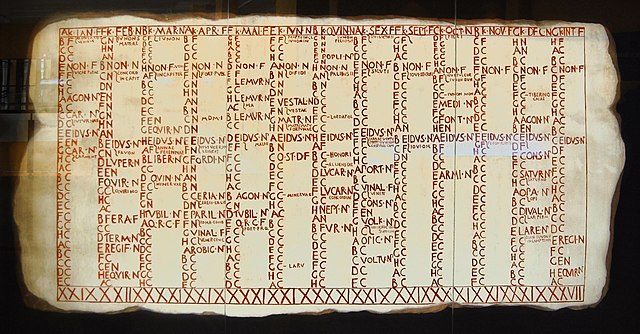In the ancient Roman calendar, Quintilis or Quinctilis was the month following Junius (June) and preceding Sextilis (August). Quintilis is Latin for "fifth": it was the fifth month in the earliest calendar attributed to Romulus, which began with Martius and had 10 months. After the calendar reform that produced a 12-month year, Quintilis became the seventh month, but retained its name. In 45 BC, Julius Caesar instituted a new calendar that corrected astronomical discrepancies in the old. After his death in 44 BC, the month of Quintilis, his birth month, was renamed Julius in his honor, hence July.
July panel from a Roman mosaic of the months (from El Djem, Tunisia, first half of 3rd century AD)
The Roman calendar was the calendar used by the Roman Kingdom and Roman Republic. Although the term is primarily used for Rome's pre-Julian calendars, it is often used inclusively of the Julian calendar established by the reforms of the Dictator Julius Caesar and Emperor Augustus in the late 1st century BC.
A reproduction of the Fasti Antiates Maiores, a painted wall-calendar from the late Roman Republic
The remains of the Fasti Praenestini, containing the months of January, March, April, and December and a portion of February.
A fragment of the Fasti Praenestini for the month of April (Aprilis), showing its nundinal letters on the left side
A fragment of an imperial consular list





